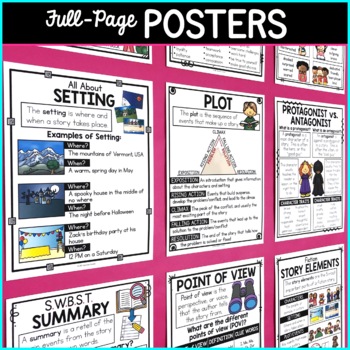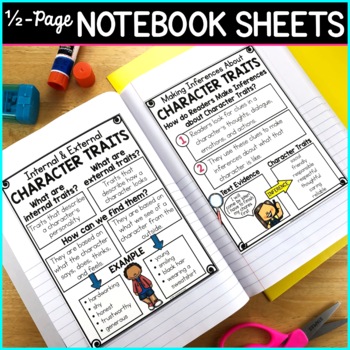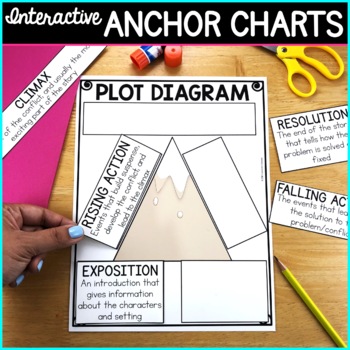Reading Fiction Posters, Story Elements Reading Comprehension Anchor Charts
- PDF
- Google Apps™

What educators are saying
Also included in
- This reading and writing visuals bundle includes all of the word wall cards, posters, and anchor charts you need to introduce reading and writing concepts and provide visuals for students to reference all year long! This set currently includes over 400 reading and writing word wall cards and currenPrice $103.00Original Price $205.50Save $102.50
- These 150+ reading posters and interactive reading anchor charts are a must have for introducing and reinforcing tons of important reading vocabulary and concepts!Printing flexibility allows for either a poster, an interactive anchor chart, or mini (half page) posters/anchor charts for students' reaPrice $45.00Original Price $52.00Save $7.00
Description
These Fiction Reading Posters and Interactive Anchor Charts are a must-have for introducing and reinforcing tons of important nonfiction vocabulary and concepts! Some of the topics included are summarizing fiction, finding story elements, and analyzing character traits.
Printing flexibility allows for either printing full-page fiction posters, interactive anchor charts, or mini (half page) posters/anchor charts for students' reading notebooks!
Now you can introduce a lesson with a poster or anchor chart, while students are able to interact with them at the same time in their own reading notebooks! Adding them to their own notebooks is the perfect way for students to have easy access to ALL lessons taught, so you don't have to worry about keeping every poster on display throughout the year.
Be sure to take a look at the product preview for a closer look!
23 Fiction Posters/Anchor Charts Include:
- Fiction Book Basics
- All About Fiction
- Sequence of Events
- Setting
- Plot
- Story Elements
- Problem/Solution (or Conflict/Resolution)
- 4 Types of Conflict
- Main Character
- Analyzing Character Traits
- Character Emotions vs. Traits
- List of Character Traits
- Making Inferences About Character Traits
- Internal & External Character Traits
- Protagonist vs. Antagonist
- Flat Character vs. Round Character
- Theme
- Summary (2 Options)
- Dialogue
- Point of View (2 Options)
- 2 Versions: Two versions are included for the posters - one with more details (more text) and one with less text (larger font).
- 4 Formats: Full-Page Posters, Full-Page Interactive Anchor Charts, Half Page Posters or Anchor Charts, and a digital Google Slides™ format
This product is available at a discount in the Reading Posters Bundle, and at an even larger discount in the Reading & Writing Visuals Bundle!
More Fiction Resources:







